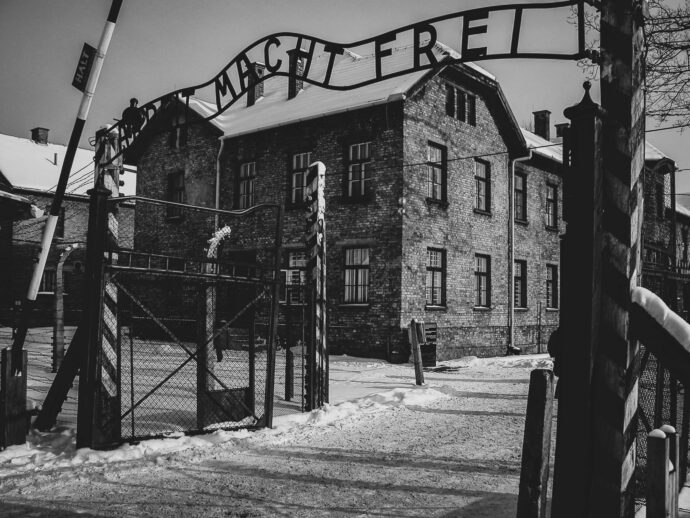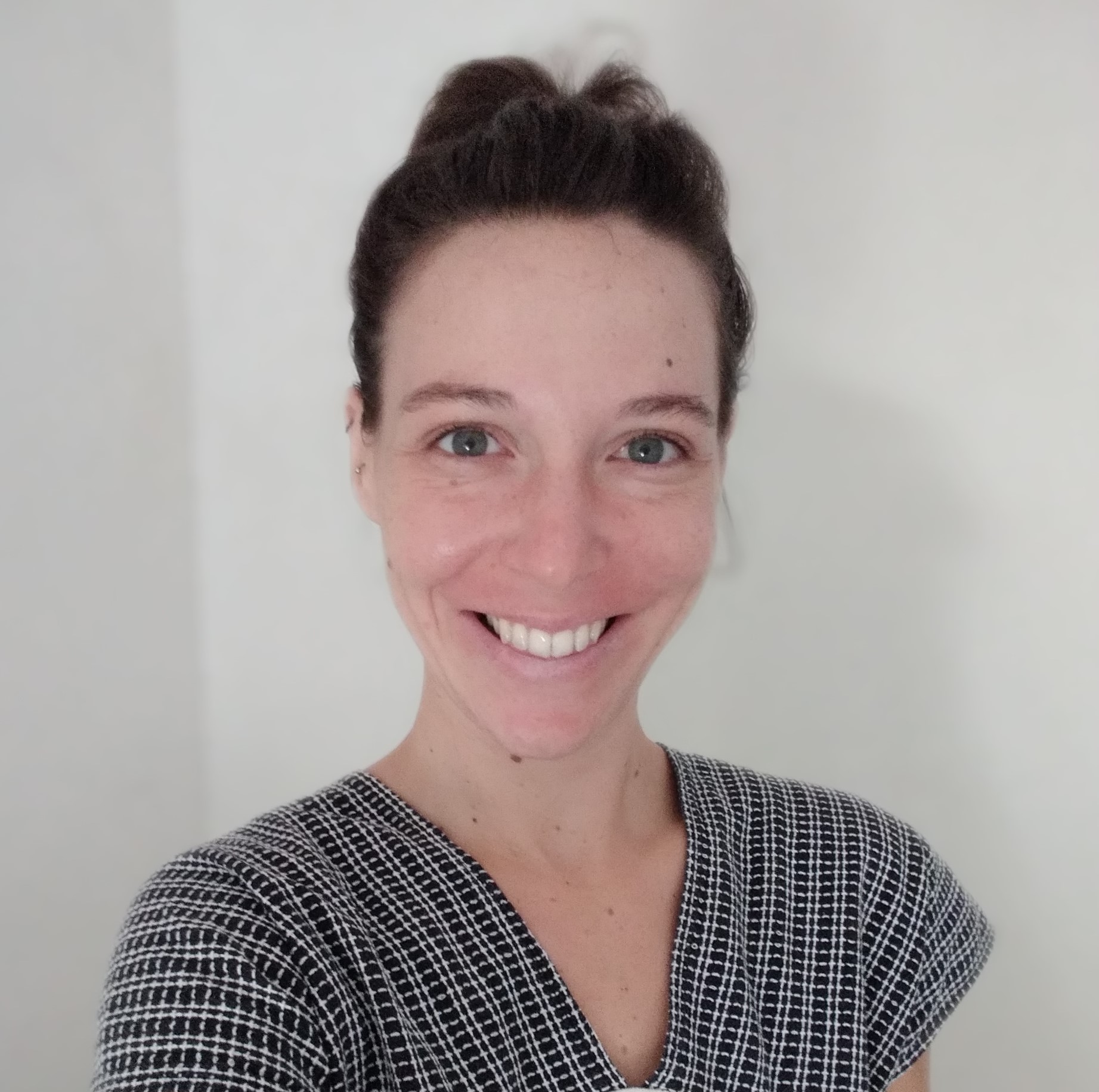Before I moved there in 2019, the first time I set foot in Poland was for a two-month work-related project in Krakow.
During my time there, I lived right in the centre of Stare Miasto, Krakow’s vibrant old town, 2 minutes away from the main market square.
Something I did not know at the time, though, was that Oświęcim was only one hour’s drive.
If you do not recognize the name, worry not. Neither did I.
Oświęcim is the Polish name of a town in Lesser Poland that, when using the German name, sounds familiar to most: Auschwitz.
“Oh, not another article on the horrors that took place in one of the most known concentration camps.”, you might think.
But for this one, I’d ask you to bear with me, as in this post, I would like to tell my personal experience while visiting the memorial.
And to share how, from a humble perspective, such a place and its significance, had an impact on me and how it shaped the meaning I give to a day such as this.
Why does the International Holocaust Remembrance Day occur on this date?
78 years ago, on January 27th, the Soviet Red Army reached and liberated the infamous Auschwitz concentration and extermination camp.
Symbolically, in 2005 the United Nations General Assembly designated that date as International Holocaust Remembrance Day.
In Israel, however, the first Holocaust Remembrance Day took place on December 28th, 1949, organized by the Chief Rabbinate of the country.
At that point, the Israeli parliament did not have a dedicated ceremony.
Things changed when in 1951, they announced the parliament would vote for a new date to become the official one for the nation.
The Israeli Parliament declared the 27th of Nisan the definite Holocaust Day.
This date remains in vigor still today.
Entering the Auschwitz-Birkenau Memorial
When the bus slowed down and approached the parking space just outside the memorial, you would not have thought to have arrived in one of the most known locations on planet Earth.
In a way, it almost felt anticlimactic.
Stepping out of the bus, I faced directly the entrance of the museum. There, long queues to get a set of headphones moved quickly towards the left side of the main entrance.
The amount of visitors was impressive, more than I ever saw at any other location.
Once we received our set, the group I was with and I moved towards the inside of the memorial.
“Over 1.1 million men, women and children lost their lives here. So, out of respect, I would ask you, please, to refrain from taking selfies on these premises.” asked our guide.
We moved along and our visit began at the notorious gate, bearing the sentence “ARBEIT MACHT FREI”, work makes one free.
There is an overwhelming energy in a place like Auschwitz. All of a sudden you feel at loss of words, loss of explanation and rational thinking.
The tour guide walked us among the blocks, now housing different sections of the museum.
Each block displays a number and some of them represent a demographic whose life ended during the Holocaust.
Block 13 for the Sinti and Roma, 15 for the Poles, 18 for Hungary and so on.
I remember walking along the main corridor of one of them. On each side of the walls, picture portraits hung. While proceeding, hundreds of eyes from victims would gaze at you.
And you did not really have any other choice but to look back at them.
Numbers, especially when that high, might give us the chills. Translating those digits into actual faces and realizing the scale of the reach the Holocaust had, freezes your blood.
Evidence of crimes and the crematorium
While there is really no way to skim out what was less impactful, what broke my heart during the tour were the block showing the so-called evidence of crimes and entering the gas chambers and crematorium.
What I mean by evidence of crimes is a series of rooms, each of which displayed something that was taken away from the prisoners. Or objects and tools that were used to harm them.
You would walk in one of the rooms and behind a glass was a messy display of pots and pans sequestrated at the entrance of the camp.
Then, it would be the turn of reading glasses, of the suitcases, of the brushes.
The more you advanced, the more disturbing the exhibits: artificial limbs, shoes, the empty cans of Zyklon B and finally, the hair. A huge, stretched window filled with anything but human hair.

Exiting the block, after witnessing such blatant evidence, not a word was spoken. Talking was superfluous.
The last stop before exiting the memorial of Auschwitz I (known this way for being the main camp, along with Auschwitz II – Birkenau) brought our group to the gas chambers and the crematorium.
Going in, your mind could not but wonder what the prisoners could have felt entering those same places we were standing on.
How did they react? How would they face such destiny unknowingly or hopelessly? And even more, how did those officials continue to perpetrate such carnage blindly and without questioning it morally?
A few girls holding the Israeli flag walking in front of us could not hold back their tears. Neither could most of us.
Normality shadowing a hulking reality
Leaving Auschwitz I, all I could think of was how “normal” it all looked.
Nothing had massive proportions, nothing seemed to stand out as unusual. The camp surely had a military feeling to it, with the barbed wire and the aligned blocks, but overall it blended in.
And it was exactly this normality that shook something in me. The mainstream tendency is to consider uniformity as the way the world should go.
I believe, though, that when we get accustomed to something to the point that it homogenises with our reality and we do not see the limits anymore, this is where we should ring an alarm.
The contrast of the unusual, unforeseen, unexpected is what pokes our sensibility and attracts our focus. Once it grabs our attention, then we can question, we can investigate, we can understand or we can fight back.
However, when a situation becomes normal, it fades away, its colors wash off and we forget about it.
I don’t know if mine was only an impression or whether the concept of such a location was planned and designed to look ordinary.
However, what I witnessed awoke in me a deeper awareness against just being content with how things normally are. And to learn to look beyond them.
To question whether the path chosen is not only the correct one but one that respects humans and their right to thrive and be diverse.
Remembering the past to build a more human future

78 years have passed since Auschwitz camp was discovered and the generation that lived this humanity dark hour and survived will ultimately leave this world.
A recurrence such as International Holocaust Remembrance Day is needed even more nowadays than decades ago, when these happenings were still fresh in the common memory.
This day is meant to remind us that these horrors developed and masked themselves as the norm, as what it was supposed to be.
One of the concerns of the guide before we left was the fact that, due to the passing of most survivors, nowadays people begin to forget and, in the worst of cases, fill the blanks with other narratives.
Being conscious about how history rolled itself out, being aware of the mistakes and bad choices of the past is the key to avoid falling into the spiral of normal, of the ordinary that led to events such as the killing of over 6 million people.
Learning history and cultures with SPEAK
The Holocaust is the event that unfortunately lies behind the declaration of this International Remembrance Day.
The horrors that on this day we take a moment to remember, sadly, are part of a much bigger pool of injustice and historical catastrophes perpetuated by humans against humans.
Occurrences, of similar or smaller scale, took place all over the world, at different times and targeting other populations.
In order to prevent these becoming the norm, knowledge is key and connections are a way to access that knowledge, oftentimes hidden from or overlooked by the mainstream.
If you wish to get in touch with other people, points of view and tap into different sources of cultural knowledge, SPEAK is here to help doing just that.
Through SPEAK, you will be able to connect with people from all over the world, discover their culture, their histories and personal stories.
Thanks to our model of language exchanges, you will be able to either be a buddy and lead a group; or you can participate in one.
SPEAK prides itself with providing a safe space, where diversity is championed, bridges between realities built and meaningful connections established.
Come join our mission, open yourself to the world and widen your horizons with us.
A note on the post
This post finds its inspiration from the personal experience of the author, visiting the camp of Auschwitz I as well as Auschwitz-Birkenau in Lesser Poland. The description of the tour is not complete, nor was it intended to be.
Any reference to the impressions had are personal and do not reflect necessarily the point of view of SPEAK as a whole.


